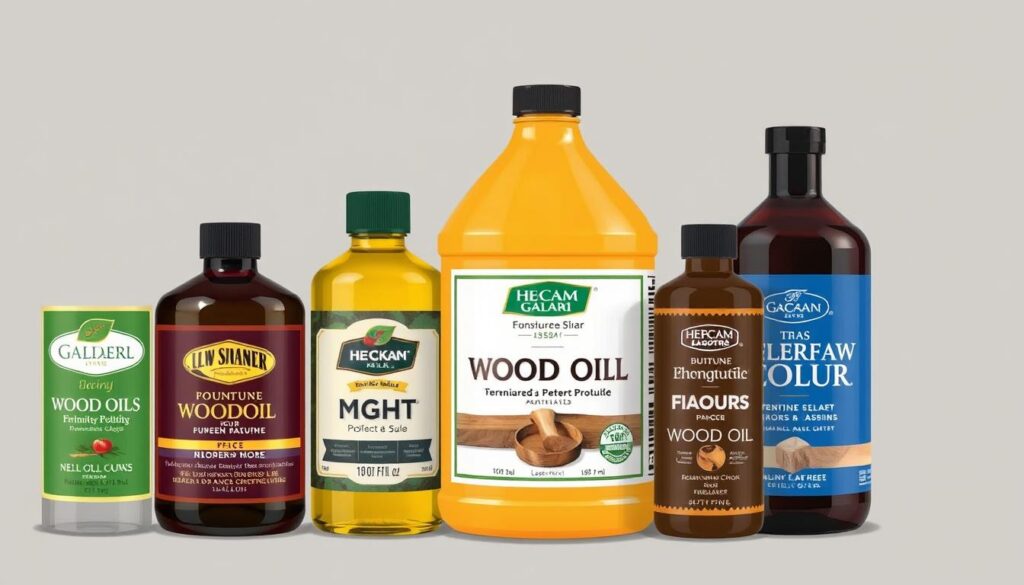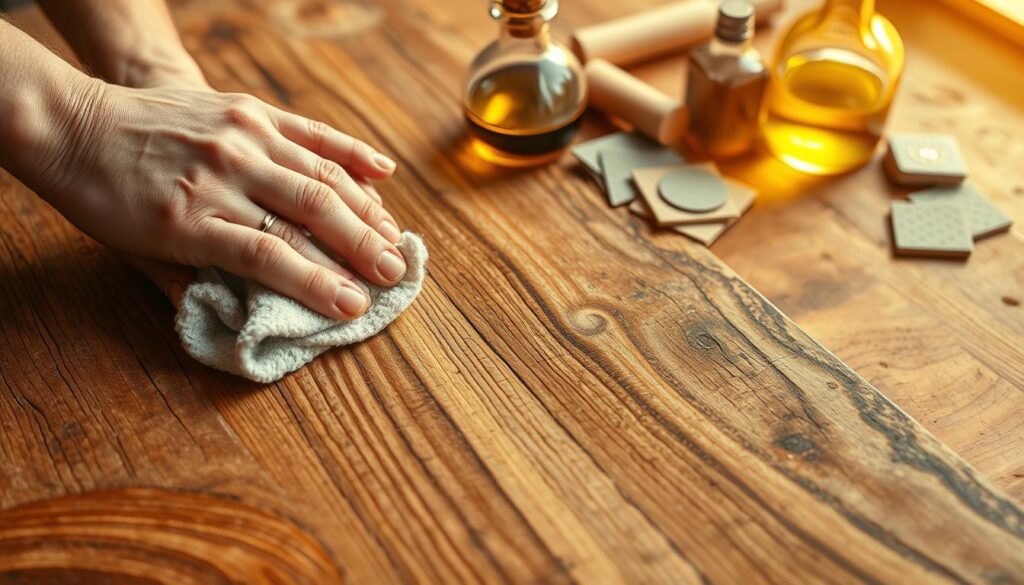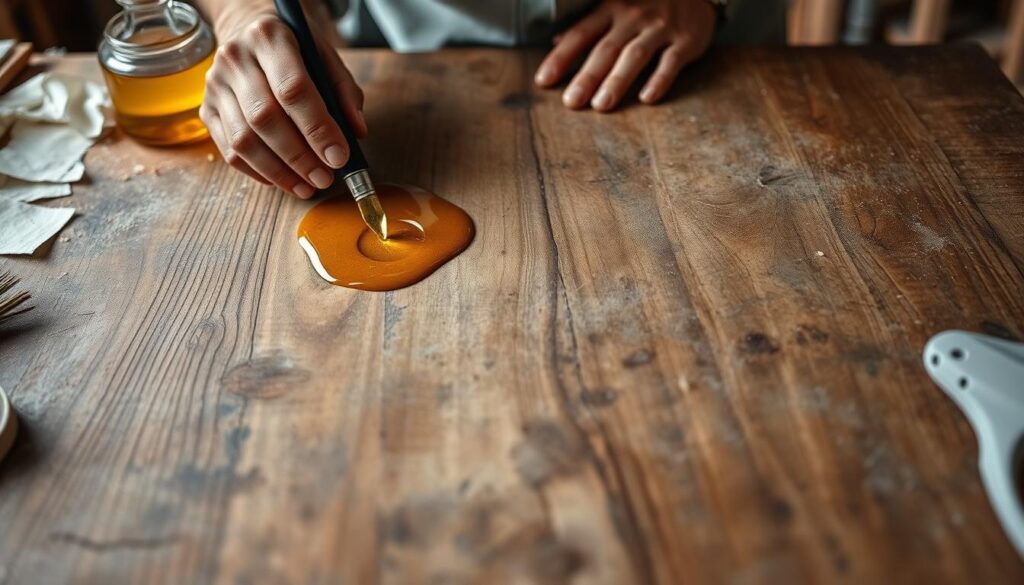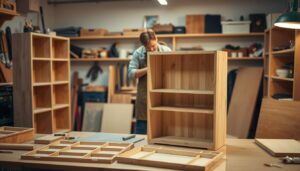Wooden furniture adds warmth and character to both indoor and outdoor spaces, but its charm comes with a susceptibility to fading over time. Sunlight, heat, and exposure can dull the lustre of wood, making once beautiful pieces look tired and worn.
However, restoring and preserving the natural beauty of your furniture is a rewarding process that can bring these pieces back to life. By understanding the factors that affect the appearance and integrity of your wooden items, you can take the first step towards reviving their original beauty.
Key Takeaways
- Learn how to assess the condition of your wooden furniture.
- Understand the role of oil treatments in restoring wood finishes.
- Discover professional techniques for maintaining your furniture’s natural beauty.
- Explore the benefits of oil-based restoration for various wooden items.
- Transform tired, faded wood into stunning furniture pieces.
Understanding Wood Damage and When to Restore
Understanding the signs of wood damage is essential to determining the right restoration approach. Before diving into the restoration process, take a moment to inspect your wooden furniture for signs of wear and tear.
Signs Your Wooden Furniture Needs Attention
Look for areas where the colour has become uneven, the finish is peeling, or the wood appears dry and brittle. Other indicators include faded colours, rough or splintery surfaces, and visible water rings or stains. By identifying these signs, you can determine the best course of action for restoration.
- Check for uneven colour or fading due to sunlight exposure.
- Inspect for rough or splintery surfaces that may need sanding.
- Look for signs of water damage, such as rings or stains.
Common Causes of Wood Fading and Damage
Prolonged exposure to sunlight can cause wood to fade unevenly, losing its vibrant colour over time. Fluctuations in humidity and temperature can also lead to damage, causing the wood to expand and contract, resulting in cracks and splits. Understanding these causes will help you take preventive measures to protect your wooden furniture.
As furniture expert, John Smith, once said, “Regular maintenance is key to extending the life of your wooden furniture.”
“The key to maintaining the beauty of your wooden furniture is regular maintenance and prompt restoration when needed.”
By recognizing the signs of damage and understanding the causes, you can take the necessary steps to restore your wooden furniture to its original beauty.
Essential Tools and Materials for Wood Restoration
The key to a successful wood restoration lies in having the essential tools and materials. To restore your wood furniture effectively, you’ll need to assemble a comprehensive toolkit and gather the right materials.
Cleaning Supplies You’ll Need

To begin the restoration process, you’ll need gentle cleaning supplies that won’t damage the wood surface. Select cleaning products specifically formulated for wood furniture, avoiding harsh chemicals that could further damage the wood’s natural properties. Specialised cleaning tools like soft cloths and microfiber towels will help remove dirt and grime from wooden surfaces without scratching.
Sanding Equipment for Proper Preparation

Having the right sanding equipment is crucial for proper preparation. You’ll need sandpaper of various grits, from coarse to fine, to effectively remove damaged layers without harming the wood beneath. This will ensure a smooth surface for the restoration process.
Choosing the Right Oil for Your Wood Type

Choosing the right oil for your wood type is vital for a successful restoration. Different types of wood oils are available, including tung oil, linseed oil, and specialised furniture oils. Understand how the porosity and grain pattern of different wood species affect which oil will provide the best results for your restoration job. Oil Plus2C is a high-quality finishing product that offers a durable finish and comes in a wide range of colours, allowing you to match or entirely transform the look of your furniture perfectly.
How to Renew Faded Wood Finish with Oil
With the right techniques and materials, you can easily renew your faded wood finish and make it look like new again. Renewing a faded wood finish with oil is a simple and effective way to restore the beauty of your wooden furniture.
Preparing Your Workspace
Before you start the restoration process, it’s essential to create a suitable workspace. Ensure you have proper ventilation, adequate lighting, and protection for surrounding areas. This will help prevent any accidents or damage to other items.
Cleaning and Removing Dirt and Grime
Begin by removing surface dust and grime from your wooden furniture using a soft cloth or brush. Gently clean the piece, paying special attention to crevices and intricate details. This step is crucial in preparing the surface for the oil application.

Sanding Techniques for Different Wood Types
Sanding is a significant step in the wood furniture restoration process. Start with a low grit sandpaper and gradually work your way to a higher grit, up to 150 grit, to achieve a smooth surface. Always sand in the direction of the wood grain to avoid scratches.
As
“The key to a successful wood restoration is patience and attention to detail.”
Sanding may seem tedious, but it’s crucial for a smooth finish.
Applying Oil to Restore the Wood’s Beauty
Once you’ve prepared the surface, it’s time to apply the oil. Use a soft cloth to apply thin, even coats, working with the grain for optimal absorption. Allow the oil to absorb fully before applying additional coats. The number of coats needed will depend on the type of oil and the condition of the wood.
To achieve the best results, follow the manufacturer’s instructions for the specific oil you’re using. With proper care and maintenance, your restored wood furniture will remain beautiful for years to come.
Special Considerations for Different Wood Items
The art of restoring wood involves understanding the specific challenges associated with different wooden items. Whether you’re dealing with delicate indoor furniture or robust outdoor pieces, the restoration process requires a tailored approach to maintain the beauty and durability of the wood.
Indoor Furniture Restoration Tips
When restoring indoor furniture, focus on aesthetic enhancement while ensuring practical protection against everyday use. For interior wood furniture, apply Oil Plus2C after sanding and preparation. Use a beige scrubby pad to apply the oil evenly, following the wood grain, and wipe off any excess after around 5 minutes with a suitable rag. This method helps maintain the natural colour and grain of the wood.
Outdoor Wooden Furniture Challenges
Outdoor wooden furniture faces additional challenges such as weatherproofing and protection against UV damage. For exterior use, choose between Hybrid Wood Protector or WoodCream, depending on your project. These products not only restore the beauty of sun-damaged wood but also provide long-lasting protection against UV rays. They are available in various colours, allowing you to customise the look of your furniture.

Treating Wooden Floors and Large Surfaces
Large wooden surfaces like floors, tables, and decking require consistent application across extensive areas. Ensure you follow a systematic approach to treat these surfaces evenly. For large projects, consider the type of wood and its condition to choose the appropriate restoration products and techniques. Refer to our guide on wood oils for more detailed information on selecting the right products for your project.
| Wood Item | Restoration Tips | Recommended Products |
|---|---|---|
| Indoor Furniture | Focus on aesthetic enhancement and protection | Oil Plus2C |
| Outdoor Furniture | Weatherproofing and UV protection | Hybrid Wood Protector or WoodCream |
| Wooden Floors | Systematic application across large areas | Depends on wood type and condition |
Conclusion: Maintaining Your Restored Wood
To keep your wooden furniture looking its best, regular maintenance is essential. Once you’ve restored your wood, establishing a routine that includes dusting and cleaning with products specifically designed for wood will help preserve its beauty.
Regular maintenance not only extends the life of your restoration work but also prevents the buildup of dirt and grime that can damage wood surfaces over time. By understanding how to address minor damage promptly and adjusting your maintenance routine according to seasonal changes, you can keep your wooden furniture in optimal condition.
Using the right products and techniques, such as re-oiling your furniture based on usage and environmental exposure, will help maintain its colour and finish. By following these simple maintenance tips, you can ensure your wooden furniture remains a cherished part of your home for years to come, becoming a valuable and character-filled piece over time.



